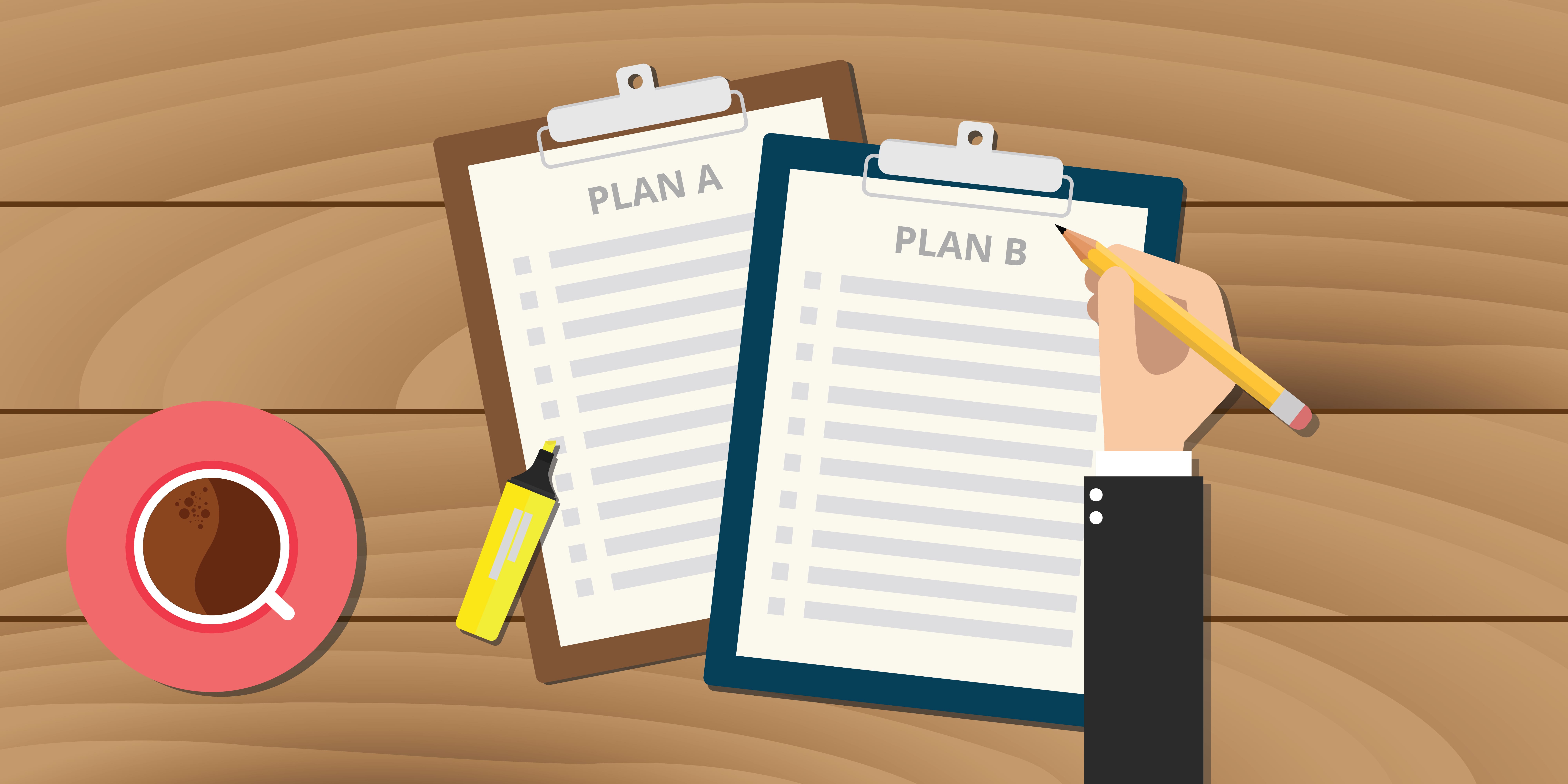Here’s the bad news about price discussions with large and enterprise companies: These conversations can be nerve-wracking and sometimes downright brutal.
Here’s the good news: You’ll flourish as a small business once you master these conversations and build your confidence.
But wait, there’s more good news!
Large organizations rarely ask you to come up with a price on the spot. You will have time to think about the value of the product or service you’ll be providing for them.
Let me repeat that: You’ll have time.
So rather than coaching you on the intricacies of face-to-face, rapid-fire negotiation, I’m going to share with you some enterprise-specific insights and techniques. This information will help you navigate the long, often asynchronous price discussion with poise.
To Charge More, or Not to Charge More…That Is a Good Question
Should you charge large or enterprise companies more than you would charge a small business for the same offering?
Yes. Probably.
But not because they have more money. In fact, this notion — that small businesses charge enterprises more because they know the enterprise has money — sometimes gives small businesses a bad reputation.
So let’s clear the air.
You’ll likely need to charge more because working with an enterprise will cost your business more in time, money and resource. It will require extra effort in the way you deliver your core offer (meetings, rounds of changes, responding to stakeholder feedback, etc.) and you’ll endure a more complex payment process, meaning more effort for your administrators or operations lead (POs, procurement, compliance, payment terms, etc.).
This isn’t about taking advantage of big business — it’s about making sure you’re compensated for the extra work and it's a sign of your own maturity as a business.
Never Assume
If I could give you only one piece of advice about talking prices with large organizations, it would be this: Never make assumptions — always dig for more information.
Make sure you’re totally clear on all the expectations before you present your price.

Depending on your product or service, here are a few things you should work to uncover:
- What are the prospect’s expectations around meeting attendance? Enterprises love meetings! Will you be expected to be at every one over the course of the project?
- Do they expect you to meet with them in person or over the phone?
- If you’re doing creative work, what are their expectations around changes, revisions, and feedback? You could pose the question this way: “Are you comfortable with one round of changes, or should I include contingency for extra rounds?”
- What does the company expect in regard to ongoing technical support or customer support? This probably applies mostly to products such as software or other technology, but may apply to other products or services as well.
- What kind of professional insurance(s) do they expect you to have and what level/amount of cover. Don't focus any time or attention on this during your meetings but know that this will probably be required and it may be an extra cost you've not factored into your prices when you set them for doing business with smaller customers.
- Are there any deadlines you should know about? This is an important one if meeting their deadline means you need to bring in extra resource.
4 Things to Watch Out for During the Price Conversation
In my experience, there are four things that sometimes take small businesses by surprise when having price discussions with enterprise clients…
Anticipate a discount request
There is a really, really good chance you’ll be asked to discount your price. If you’ve already decided your pricing and you’re firmly set on the value you deliver for that price, DON’T BE BULLIED. Be prepared to walk away if the alternative is to accept a bad deal. No company logo is worth taking a bad deal. You’ll regret it every time.
Think total cost
Enterprises usually prefer to calculate their resource expenditures in terms of project costs or annual cost. If you’re used to selling your product or service on a per user, per seat, or per-hour basis, do a little bit of math on behalf of your client. Even if you’ll be charging your usual way, at least do your best to present the total project cost or annual cost to your customer.
Expect a looooong payment cycle

As a small business, you might be used to getting paid immediately, a week after the work is done, or even the month after you issue your invoice. Don’t expect this from a large organization. You’ll be lucky to receive payment any quicker than the 30th of the month following the month of your invoice — and it’s not uncommon at all for them to request 60- or 90-day payment terms.
Partly this is a simple cashflow management tactic. And partly it’s because enterprise invoice payment systems are complex and often very rigid. This doesn’t mean you’re out of luck, though.
Whatever your regular payment terms are, make sure to state those at the bottom of your quote, and include a note that the quote is based on those payment terms. This will give you the opportunity to negotiate a small “admin fee” if they won’t budge from a lengthy payment term and it's really going to be a problem for you.
The purchase order conundrum
Another thing that’s common for large and enterprise companies, but not so common for small businesses, is Purchase Order Numbers (POs). These are a way for large organizations to keep track of departmental budgets. Each time money is committed from a department’s budget, they issue the supplier with a PO, and you cannot invoice in excess of the amount stated on that document.
Here’s how Wikipedia defines a PO:
A purchase order (PO) is a commercial document and first official offer issued by a buyer to a seller, indicating types, quantities, and agreed prices for products or services. It is used to control the purchasing of products and services from external suppliers.
A PO is just another factor that can delay payment. It’s certainly something to be aware of as you prepare to begin working with a large organization.
In principle, you should not be expected to begin work until you have the PO in-hand, because that PO locks in their commitment to you. In practice, though, and especially if you do lots of small jobs, you’ll probably need to get started before you have the PO.
The Truth Behind the Dreaded Procurement Process
I mentioned at the start of this article that the enterprise pricing discussion can sometimes be brutal. This brutal part usually comes in when you have to have your pricing discussion with the fun team known as “Procurement.”
The procurement department (often a third party) is charged with making sure the company gets the very best deal they can. Procurement’s KPIs (key performance indicators) usually involve showing that they have negotiated a better price from a supplier (that’s you) than was originally offered.
Dealing with Procurement can feel a bit like entering a boxing ring — it’s often a confrontational engagement, and you usually walk away feeling personally beat up.
If you do have to work through Procurement, remember that it’s not personal. It’s analytical. Procurement’s goal is to secure the best deal for the organization.
If it’s your first time dealing with the procurement team, it can help to talk to someone who’s been through it before — a peer, colleague or friend — and lean on them a bit during this process. The added moral support can go a long way to getting you through with your confidence intact.
You Made the Sale!
At this point in the process, you’ve made the sale. You’ve gotten through the first meetings and the price discussion, your quote has been signed off on, and you might even have a PO in hand. Congratulations!
But your job’s not done yet. Sorry.
In my next and final article, I’m going to tell you what to expect after you’ve closed the deal.
Read past articles in the Small Fish, Big Fish series:
- What's the big deal about working with big companies?
- 3 Steps to Choose and Qualify Your Large and Enterprise Leads
- How to Land the First Meeting With Your Enterprise Lead
- What to Expect in Your First Sales Meeting With a Big Lead (Surprise! It’s Not a Sale)
- The New Sales Pro Dress Code
- How to Run a Meeting That Impresses the Pants off a Big Prospect
- Words of Wisdom: What to Say (and NOT Say) in an Enterprise Sales Meeting
- Understanding Reporting Lines and How to Work With Them
Or get the whole series in my free e-book: Small Fish, Big Fish: A small-business guide to selling to large and enterprise companies